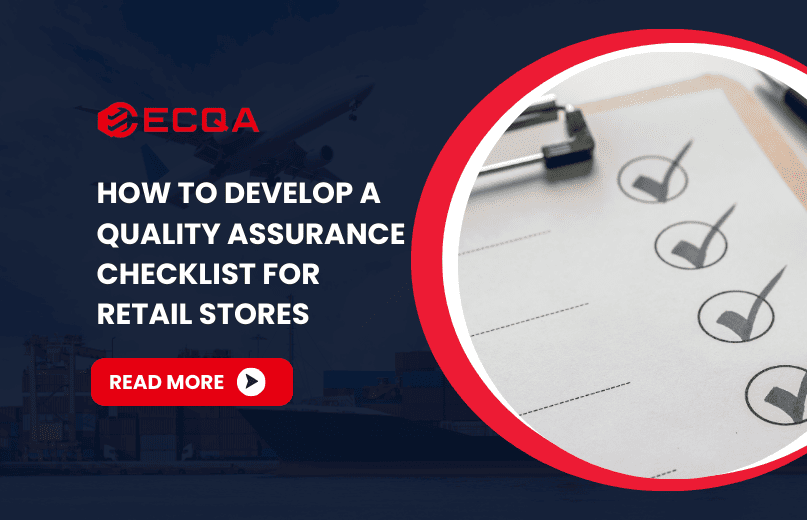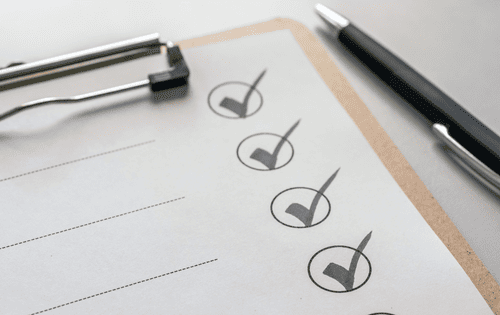
How to Develop a Quality Assurance Checklist for Retail Stores

A Quality Assurance (QA) checklist is a vital tool that helps ensure that retail operations meet defined standards consistently. It ensures retail operations meet defined standards, guaranteeing a superior customer experience and operational efficiency.
This article outlines the essential steps for developing a comprehensive QA checklist that not only enhances customer satisfaction but also aligns with your goals for operational excellence, ensuring your products and services reach the highest standards.
Understanding the Importance of Quality Assurance in Retail
Quality assurance in retail is not merely a box-checking exercise; it involves implementing processes that ensure products meet customer expectations and regulatory requirements. A robust assurance checklist serves as a roadmap for retail managers and staff, guiding them in identifying areas for improvement and ensuring compliance with industry standards. By prioritizing quality assurance, retailers can foster customer loyalty and enhance their brand reputation.
Key Elements of a Quality Assurance Checklist
To create a highly effective QA checklist, several key components must be thoughtfully included. Each element plays a vital role in the development and ongoing implementation of quality assurance within your retail environment. Here are the main elements to consider for your Quality Assurance Checklist:
1. Define Project Requirements
The first step in developing a QA checklist is to clearly outline the project requirements. This includes understanding the specific needs of your retail environment and the standards that must be met. By defining these requirements, we establish a solid foundation for the checklist. It ensures that all subsequent actions align with these standards, guiding staff toward achieving quality objectives.
2. Identify Roles and Responsibilities
A successful quality assurance program requires a clear definition of roles and responsibilities. Designate team members responsible for various aspects of quality control, from inventory management to customer service.
By specifying who is accountable for each task, we create a structured environment where everyone knows their obligations. This clarity fosters accountability and enhances the effectiveness of the QA processes.
3. Create Comprehensive Checklist Items
The core of any quality assurance checklist lies in its items. Each item should address a specific quality metric relevant to your retail operation. Consider including the following categories:
- Product Quality: Ensure products meet safety standards, functionality, and aesthetic criteria.
- Customer Experience: Evaluate the shopping environment, including cleanliness, organization, and staff behavior.
- Inventory Management: Check for accurate stock levels, proper labeling, and shelf life of perishable items.
- Compliance: Verify adherence to local regulations, health codes, and company policies.
Each item on the checklist should be clearly defined, including specific criteria that must be met to ensure consistent quality. This precision and clarity are essential for effective quality assurance practices.
4. Establish Evaluation Criteria
Once checklist items are created, establish clear evaluation criteria for each item. This could involve rating systems, pass/fail metrics, or qualitative assessments. Having well-defined criteria ensures consistency in evaluations and allows for easy identification of areas needing improvement.
5. Incorporate Continuous Improvement Practices
A truly effective QA checklist should not be a static document. Instead, it must evolve dynamically based on valuable feedback and any changes in project requirements. Incorporating continuous improvement practices enables retail managers to adapt the checklist to address new challenges, incorporate new best practices, and align with any changes in the retail environment.
Regular reviews of the checklist should be conducted to assess its overall effectiveness and to update it with valuable insights from staff or shifts in customer expectations.
Implementing the Quality Assurance Checklist
Once the QA checklist is developed, the next step is implementation. Here’s how to effectively integrate it into your retail operations:
1. Train Staff
Effective training is crucial for successful adoption of your Quality Assurance Checklist. Conduct workshops and detailed training sessions to thoroughly educate staff on the importance of quality assurance, along with providing them with clear instructions on how to use the checklist efficiently and effectively. This will ensure that all team members are fully aligned with the set quality standards and fully understand their respective roles in maintaining them on a daily basis.
2. Monitor Compliance
Regular monitoring of compliance with the QA checklist is absolutely essential. Designate specific team leaders or managers to conduct routine inspections and assessments. These monitoring activities should always be thoroughly documented, enabling an ongoing review of overall adherence to the set quality standards. Regular monitoring helps quickly identify trends, allowing corrective actions to be taken promptly and efficiently to maintain the best level of quality.
3. Encourage Feedback and Collaboration
Creating a culture of feedback is vital for continuous improvement. Encourage staff to share their insights and experiences related to the quality assurance processes. Regularly hold meetings to discuss the findings from the QA checklist assessments, fostering collaboration and teamwork in achieving quality goals.
Measuring Success QA Checklist and Making Adjustments
To determine the effectiveness of your QA checklist, establish metrics that reflect success. This could include customer satisfaction scores, reduction in return rates, or compliance with audit standards. By tracking these metrics, we can make data-driven decisions regarding necessary adjustments to the checklist.
1. Analyze Results
Conduct regular analyses of the data collected from quality assurance assessments. Identify patterns and areas of concern that may require attention. This analysis provides valuable insights into how well the retail operation meets its quality objectives.
2. Revise the Checklist as Needed
As project requirements change over time, or as new challenges and opportunities arise, the timely revision of the QA checklist is absolutely necessary. Keep informed about current industry trends and any shifts in customer expectations to ensure your checklist remains fully relevant and effective within the evolving retail landscape. Engaging with team members during any revision process will enhance buy-in and will ensure that the checklist accurately reflects real-world conditions and challenges faced by the staff.
Developing a comprehensive Quality Assurance Checklist for retail stores is vital for achieving operational excellence and consistently ensuring your products and services meet the highest possible quality standards. By clearly defining all project requirements, clearly identifying roles and responsibilities, and implementing carefully detailed evaluation criteria, retailers can create a strong tool for effective and consistent quality management.
ECQA specialized services in third-party inspections and supplier audits provide retailers with the insights needed to maintain compliance and uphold quality standards. With our expertise, you can enhance your quality assurance efforts and build stronger relationships with suppliers, ultimately leading to higher customer satisfaction and loyalty.
For more information on how ECQA can support your quality assurance initiatives, visit our Supplier Audit Services page or learn about our Quality Control Solutions.
Frequently Asked Questions (FAQ)
1. What is a Quality Assurance Checklist for Retail Stores?
A Quality Assurance Checklist for retail stores is a structured and highly detailed document that clearly outlines all the specific standards, detailed processes, and required criteria needed to ensure that all products and services consistently meet the highest possible quality expectations.
It serves as a clear and practical guide for evaluating a wide variety of aspects of your retail operations. This can include inventory management, customer service, and overall compliance with the various industry and legal regulations.
2. Why is a QA Checklist important for retail stores?
Using a QA checklist is absolutely crucial for retail stores as it helps to maintain consistent standards. It also significantly reduces errors in your business’s operations and greatly enhances customer satisfaction. By implementing a detailed and highly structured approach to quality assurance, retailers can quickly identify potential issues before they negatively affect any of their valued customers, consistently ensuring a fully positive shopping experience.
3. What elements should be included in a QA checklist?
A comprehensive assurance checklist should include the following elements:
a. Product quality standards
b. Compliance with safety regulations
c. Inventory management practices
d. Employee training and performance metrics
e. Customer service protocols
f. Return and exchange policies
4. How often should a Quality Assurance Checklist be updated?
A quality assurance checklist should be regularly reviewed and updated to reflect any changes in project requirements, industry standards, or business operations. Typically, it’s advisable to conduct reviews at least quarterly or whenever significant changes occur within the store.
5. Can ECQA assist in developing a Quality Assurance Checklist?
Yes, ECQA specializes in all aspects of quality control and provides vital services to assist retailers in developing a customized Quality Assurance Checklist. Our expert team offers insights into all relevant best practices, comprehensive compliance standards, and extremely effective evaluation techniques to ensure your checklist is well-designed and effectively meets all of your business’s specific requirements.
6. What are the roles and responsibilities associated with QA processes?
Roles and responsibilities in QA processes typically include:
– Quality assurance managers overseeing the implementation of the checklist.
– Employees responsible for adhering to quality standards.
– Supervisors who monitor compliance and performance.
– External auditors who provide independent assessments.
7. How does a Quality Assurance Checklist improve customer satisfaction?
By ensuring that products meet quality standards and that staff follow established processes, a QA checklist helps retail stores deliver consistent, high-quality experiences to customers. This leads to higher customer satisfaction, loyalty, and positive word-of-mouth recommendations.
8. Where can I find more information on Quality Assurance best practices?
For more information on quality assurance and related services, you can explore the ECQA website, which offers a variety of resources, including articles on product compliance, supplier audits, and quality control solutions.

 Request Free Sample Report
Request Free Sample Report
Leave a Comment